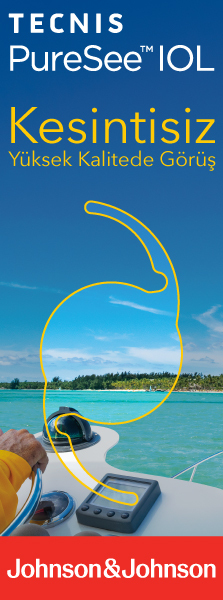2Assistant Dr. Van Yüzüncü Yıl University Medical Faculty,Ophthalmology Department, Van, Turkey
3Associate Prof.,Van Yüzüncü Yıl University Medical Faculty,Ophthalmology Department, Van, Turkey
4Prof. Dr. MD, Health Sciences University, Istanbul Beyoglu Training and Research Hospital, Ophthalmology Department, Istanbul, Turkey DOI : 10.37844/glauc.cat.2021.16.13 Purpose: The aim of this study was to compare three different intraocular lens (IOL) implantation methods performed primary or secondary in eyes with defi cient capsular support.
Materials and Methods: The records of patients who underwent IOL implantation due to defi cient capsular support were analyzed. The patients were fi rst separated into primary and secondary IOL implantation group (PIG and SIG, respectively), then divided into three subgroups among themselves as iris-claw IOL (IC-IOL), scleral fi xated IOL (SF-IOL), and anterior chamber IOL (AC-IOL). Data were compared according to the groups.
Results: The most important cause of IOL implantation was perioperative capsule rupture and insuffi cient capsular support (61.7%, n=29) in PIG, aphakia (55.8%, n=24) in SIG. The most preoperative comorbid condition was iridodonesis (30.4%, n=14) in PIG and IOL subluxation (93.8%, n=15) in SIG. The mean BCVA in the 3rd months was signifi cantly better in the IC-IOL subgroup than AC-IOL subgroups (p=0.001) in PIG. The mean BCVA at the last follow-up was signifi cantly better in the SF-IOL group than the AC-IOL group (p<0.001) in PIG. Postoperative complication rate was 38.3% in PIG and 27.9% in SIG. There was no signifi cant difference among subgroups in postoperative complications in both groups (p>0.05, Chi-square test).
Conclusion: All three methods have advantages and disadvantages. The surgeon should consider the patient?s condition when determining the implantation method to be chosen. Future long-term studies comparing the different methods with a large number of patients may provide more information about the most appropriate method to use in eyes with insuffi cient capsular support.
Keywords : Anterior chamber lens, Aphakia, Capsular support, Iris-claw lens, Scleral fi xated lens




